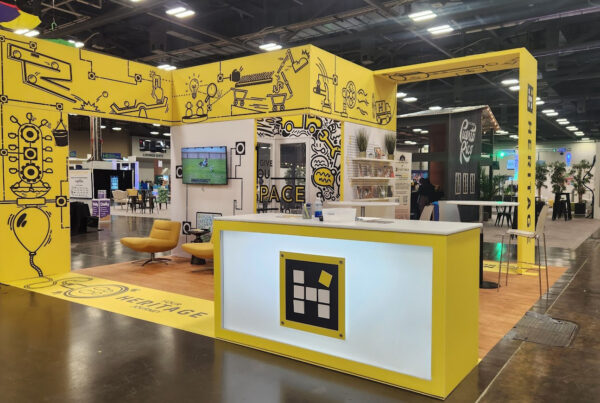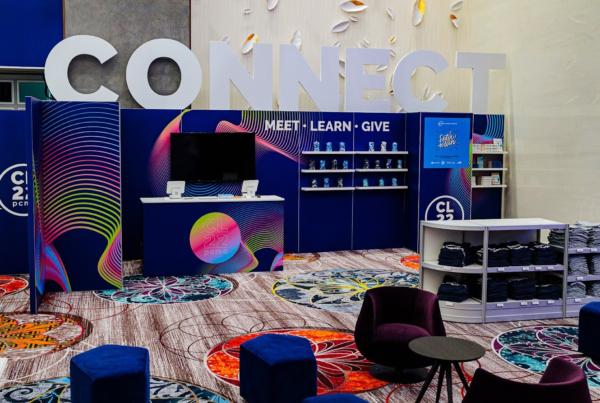Trade shows are no simple undertaking, but as the second-largest source of B2B revenue its worth your effort. By providing a platform for exhibitors to network with prospects and key players in your field, you’ll doubtlessly generate valuable leads.
Whether you’re toying with the idea of organizing a trade show or you’re a seasoned show manager looking to refine your skills, here are six ways to ensure it’s a success.
1. Time is Everything
While trade shows come in all types of styles and sizes, they take a long time to plan. In most cases, you should start the process at least a year before the event takes place. You’ll need to:
- Focus on booking the right venue. Consider both the number of attendees and the type of spaces required by exhibitors. For example, many domestic trade shows are held in Las Vegas and Orlando, cities with ample hotel and convention space.
- Take into account dates that work well for your community. Try to avoid those that conflict with other key events or peak seasons of business.
- Secure vendors. All of the convention space in the world will do little good if you don’t have industry leaders in attendance. Can you imagine a Consumer Electronics Show without Apple or Samsung?
- Implement a strategy to promote your event. This is especially important for inaugural trade shows–you’ll need to figure out a way to get the word out to attendees. Create an online presence and promote it through both email and social media. Additionally, holding a press conference or appearing on local news and radio shows could be beneficial.
2. The Type of Show Matters
Depending on the industry, you might find yourself in competition with several other trade shows. But it doesn’t have to be all or nothing. To appeal to vendors and give them an incentive to attend your event, you might consider specializing your trade show. While this will narrow your audience, it presents the appeal of more qualified leads for vendors.
While CES is the largest tech-based trade show––one that covers just about everything from eye-tracking tablets to hydrogen cars––you’ll find many smaller technology shows that focus on a particular niche of tech. For example, E3 attracts those in the video game sector while ATIA focuses on technology for those with disabilities.
3. Create an Executive Team
When organizing a trade show, you may be tempted to go it alone; however, doing so will cause you to lose out on a great resource: people. Especially people with the right set of skills as nearly every trade show needs a marketing, sales, and executive team. You might even consider designating smaller committees to oversee areas like layout and exhibitor communications.
Once you’ve figured out your configuration of teams, hold monthly meetings with your key project leaders. The goal of these will be to keep communication open, ensuring that everyone is on the same page leading up to the event.
4. Promote Early
Especially if you plan to attract attendees from outside your region, you’ll want to promote as early as possible, ensuring that you get a spot on their calendar. In addition to creating a website for your trade show – one that allows viewers to obtain event information and purchase their passes. Rather than building from scratch, there are several partner vendors, such as eventPower, Cvent, that will build and manage your website. You should also strongly consider integrating social media.
By creating dedicated accounts for your trade show on Facebook, Twitter, Instagram, and even TikTok, you can raise awareness about your trade show, and create a sense of community that extends before and past the event. This can occur organically through regular posts and through paid sponsored posts. When posting on these platforms, consider providing enticing info such as interviews with vendors and photos of the space. This way you not only reach potential attendees but also create another advertising outlet for sponsors.
Create an Award
Another way to generate buzz for your trade show is through a major award. This helps to establish thought leadership within the industry niche and incentivize vendor participation. It can be as simple as a small trophy at the end of the trade show or a gala celebration, depending on budget.
5. Set Up Early/Schedule a Run Through
No matter how prepared you are, there are always going to be little fires to put out. To minimize these issues, make sure that you spend resources to reserve space so that it provides more than enough time for you and your vendors to get fully set up. This provides time to troubleshoot any problem areas, and stop issues that might otherwise be more costly. Additionally, if you plan to have digital components as part of a hybrid event, you should stage a run-through with these speakers as well.
For example, include any speakers that will be streamed live in the test run. This will ensure your internet connection, audio, and video setup are ready.
6. Utilize an Exposition Service Team
Planning a trade show is no small feat. Even smaller events of this type require extensive efforts in terms of marketing, sales, and the nuts and bolts of the event itself. In many cases, it’s helpful to partner with an event services company.
Heritage Nationwide Exposition Services is an exposition contractor with the depth of expertise, full-service offices nationally, and a 60 year proven track record of providing the most personalized and innovative solutions for our client and stakeholder partners. A full-service event contractor, Heritage can dig into the needs of your event and help you coordinate all aspects of your trade show, from working with exhibitors to providing furniture to ensuring your event is set up and taken down on time.
By partnering with those who have been there before, you’re opening doors to a bigger network with greater resources. The pros at Heritage will handle the burden of organization and labor, giving you time back to ensure your event will be a success.





